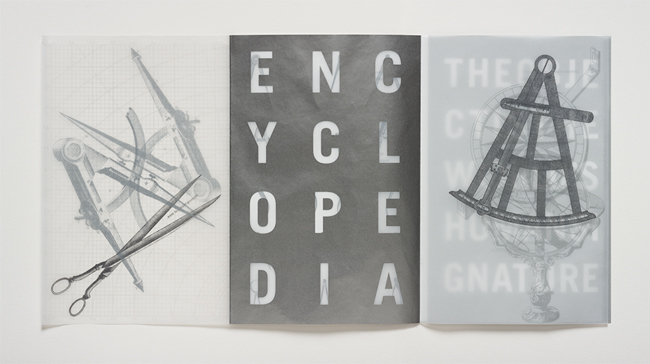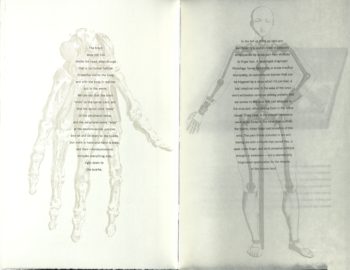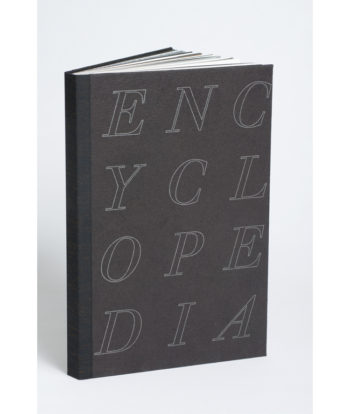Inspired by Special Collections: Ken Botnick’s Diderot Project
In a previous blog post, we highlighted the famous Encyclopédie, Ou Dictionnaire Raisonné Des Sciences, Des Arts Et Des Métiers, also known as Diderot’s Encyclopedia, which helped to spread and popularize the Enlightenment reasoning that would eventually lead to the French Revolution. The magnitude of this work’s influence in its own time cannot be overstated, and it is an influence that continues to inspire artists, authors, and academics even today. One example of its modern influence can be found in Washington University in St Louis’s own Ken Botnick’s Diderot Project.

About Professor Botnick
Ken Botnick is a publication designer, printer, and publisher of limited edition books, and Professor of Art at Washington University in St Louis. Professor Bontick has a passion for highlighting the artistry of bookmaking, and to this end, he became the first director of the University’s Nancy Spirtas Kranzberg Book Studio, which he helped to create as part of a collaboration between the Sam Fox School of Design and Visual Arts and Washington University Libraries. The studio was created under the direction of former Vice Chancellor for Scholarly Resources & Dean of University Libraries Shirley K. Baker and former Head of Special Collections Anne Posega, with the essential support of Nancy and Ken Kranzberg.
Getting Inspiration from Special Collections
On his website, Professor Botnick notes that part of the inspiration for the Diderot Project that came from a conversation he had when he was showing his students plates from the Encyclopédie in Washington University’s Special Collections classroom. During this visit to Special Collections, he told his students that one of the purposes for Special Collections was to preserve books so that future generations might be inspired by them and respond to them. He then recounts,
“When I heard myself speak those words it occurred to me that I had not worked on a book planned as a direct response to another. I also realized that the way for me to understand this Encyclopédie more deeply was to take it on as a project.”
This was the birth of what would become a four-year printing project that would culminate in the publication of a beautiful, limited edition book inspired by, and incorporating text and images from, Diderot’s Encyclopedia.
Co-authoring with Diderot

A total of forty different authors are quoted in Professor Botnick’s Diderot Project, but the main voices are Diderot’s and his own. In the image at left, the text on the left side is a quote from Frank Wilson’s The Hand and the left is an original piece written by Botnick, both printed over anatomical images taken from the Encyclopédie.
Botnick claims that he was struck by the modernity of the language in the Encyclopédie, and decided to juxtapose Diderot’s words from the encyclopedia with those of more contemporary writers like Foucault, Faulkner, Barthes, and others. For example, in the page on the left, a quote from Foucault’s The Use of Pleasure is placed next to Diderot’s article, “Senses,” from the Encyclopédie.
Highlighting Book Production
Like Diderot, Professor Botnick is interested not only in the art, but in the trade of bookmaking. Just as Diderot viewed the trades as equal to the arts in his encyclopedia, Professor Botnick’s explanation of the project highlights the materials and tools of book production as much as the book’s content. He recounts:
“Reading, photographing, and organizing the plates of the encyclopedia I realized that Diderot and I were looking at some of the same phenomena— the hands, tools, and body postures, of the makers. We both saw the workshop as places of insight, doing what humans do extremely well— giving form to things. The encyclopedia plates emphasize the artisans and the way they worked not the products of their labor.” -Ken Botnick, “Diderot Project”
Ken Botnick’s Diderot Project uses six different paper types ranging from the triple-died black flax paper of the cover to a transparent UV Ultra vellum. The pages themselves range from black to white and transparent, with printing in black, silver, gold and transparent inks.

In this project, the materiality of the book is as important and meaningful as its content. For example, Professor Botnick writes of his use of transparency in the paper and inks of the project, “This was originally driven by a desire to interpret one of the most important of Diderot’s revolutionary concepts in the Encyclopedia— his call for a more transparent society that endorsed a free currency of ideas for all citizens.” Although computer images cannot do it justice, you can get a sense of the semi-transparency of the paper in the image at the top of this page.
Because of the variety in paper types and inks with which this project has been produced, digital images of the work can hardly do it justice. We encourage you to come see the book itself at Special Collections. You can find more information on Ken Botnick’s Diderot Project and his other projects on his website: http://www.kenbotnick.com.
